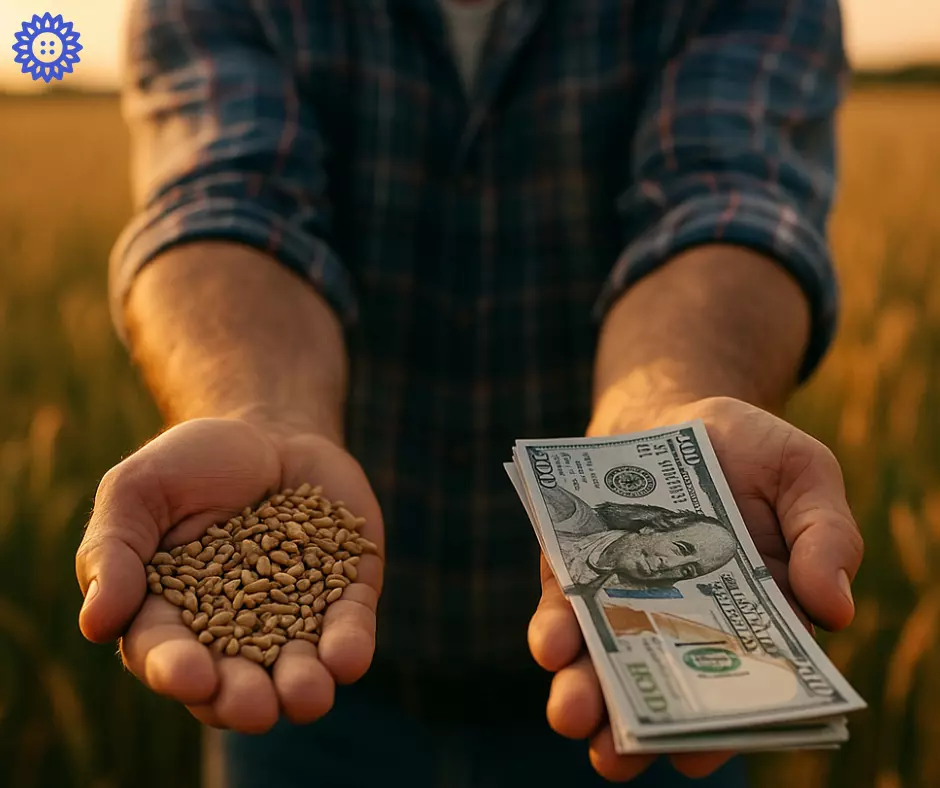01.04.2025, 07:07
Grain and Oilseed Market Overview: How Should Farmers Act in April?
Prices are stable across grain and oilseed markets

This week, the price situation in Kazakhstan’s grain and oilseed market remained mostly unchanged. According to recent data from the Research Bureau for Grain and Oilseed Crops of Kazakhstan, most commodity prices are at last week’s levels, and expert recommendations remain largely neutral or restrained, reports the analytical center Agrosearch.kz.
Grain Crops
Prices for the new grain harvest have stabilized, reflecting a balanced supply and demand on the domestic market. This is particularly true for 3rd class wheat with a gluten content of 28% and above, which is currently priced at 126 KZT/kg. Although there have been no price changes, experts advise against selling for now, recommending that farmers wait for more favorable conditions. The potential maximum for this category is estimated at 145 KZT/kg.
Wheat with lower quality indicators (gluten content up to 25%, 23%, and 20%) is priced between 87 and 77 KZT/kg. For these categories, analysts recommend selling as needed — either due to technical requirements or cash flow needs. The lowest prices are for 5th class wheat (gluten up to 17%), around 70 KZT/kg.
Barley of the second class is priced at 86 KZT/kg. Despite being close to the potential price ceiling, further growth appears limited, and analysts also recommend pausing sales for now.
The durum market depends on protein content. Durum with 14% protein is priced at 85 KZT/kg, and analysts suggest it should be sold in the short term due to limited price growth potential. Higher-quality durum with 15% protein is priced at 102 KZT/kg, and its sale is also recommended, despite the theoretical potential to reach 130 KZT/kg — analysts see little chance of that.
Traders report some limited purchases of 4th class wheat in certain regions, though overall market activity remains moderate.
Oilseed and Pulse Crops
Stability also characterizes the oilseed and pulse segment. Prices have remained at previous levels, and sales recommendations across most crops remain cautious.
Flax is holding steady at 243 KZT/kg, and experts believe it is not the right time to sell — better offers are expected. A similar strategy is advised for sunflower (185 KZT/kg), given its narrow pricing corridor and weak demand.
Rapeseed (220 KZT/kg) and soybeans (200 KZT/kg) are also in a wait-and-see zone: sales are recommended only as needed due to weak market dynamics.
Mustard (177 KZT/kg), yellow peas (122 KZT/kg), red lentils (217 KZT/kg), and large green lentils (395 KZT/kg) are also considered suitable for gradual, need-based selling.
The only crop experts strongly recommend selling now is safflower, currently priced at 138 KZT/kg. Its growth potential is considered limited, with a higher risk of price decline.
Experts emphasize the importance of a selective, case-by-case sales strategy — based on financial necessity, product quality, and logistical factors. Overall, a wait-and-see approach remains dominant. It's important to remember that listed prices are average values and can vary by region, quality, and delivery conditions.
The market remains in a holding pattern, and price movements are expected only in response to significant changes in either external markets or domestic factors.
Key Takeaways:
• Prices are stable across grain and oilseed markets.
• Expert recommendations remain cautious; case-by-case decisions are advised.
• Market activity is low, and prices are holding at previous levels.